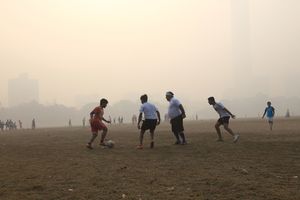India has a major demographic dividend for the next several decades, and, for us to maximise her potential, we must have a healthy, active, and productive population. India has become the world’s most populous country, and will also become the largest contributor to the global workforce with over 95 crore individuals. India’s population is expected to peak by 2064, and, over time, this will likely require more involved measures by key stakeholders to veer ourselves towards a preventive health care framework as lifespans increase. Adequate physical activity (PA) at the population level is a critical need for India leading into 2047 and beyond, primarily as a preventive health care intervention. The gains of consistent PA have been shown to be available to all age groups, genders and socio-economic classes, and its cumulative economic impact is globally estimated at $1.2 trillion to $1.7 trillion between 2020 and 2030.
Non-communicable diseases (NCDs) are said to cause 71 per cent of worldwide deaths each year—including more than 15 million premature deaths for those aged from 30 to 69—and are projected to result in an estimated $47 trillion loss to the global economy between 2010 and 2030. The significant health and productivity benefits from increased PA provide tangible returns on government initiatives and investments. A recent report on the levels of physical inactivity in India (as reported by the World Health Organization) shows inactivity levels of over 70 per cent for adolescents, coupled with a 66 per cent mortality rate due to non-communicable diseases across the population.
Current global estimates show one in four adults and 81 per cent of adolescents do not undertake enough PA, and as countries develop economically, levels of inactivity increase and can be as high as 70 per cent, due to a variety of factors.
There are three key components to PA and sports that make them the most important contributing factors to a healthier society. The first is that PA is a necessary component of preventive health care for all ages and is a low-cost intervention that, with minimal tweaks and planning, can be accessible for all. The second is the importance of children playing sport and learning about the importance of PA through their lives, including yoga, and walking in the absence of any other PA option. Research has shown that health-related behaviours and disease risk factors are embedded at a young age and continue from childhood to adults, therefore necessitating PA early on. Every child should have the opportunity to play a sport in India, at least at a participation level. The third is the positive impact on mental health. There is extensive literature now that has established how PA can improve mental health significantly. The CDC has also asserted how PA has positive effects on brain health with regular PA reducing anxiety, improving deep sleep, and components of executive function. Other studies have shown how regular PA promotes growth and development and has multiple benefits for physical, mental, cognitive, and psychosocial health that undoubtedly contribute to learning.
The urgency for India to become an active and fit nation is imminent. First, it will help ease the burden on our health care system, and also help the economy. It is estimated that the elimination of physical inactivity in India by 2047 could increase India’s GDP by up to $50 billion annually. This number represents the sum of all potential benefits of universal adult PA to the economy—including improved health and wellbeing, productivity, cognitive development, life skills, livelihood, and social cohesion. The health impact will be driven mostly by reduced expenditure on NCDs like cardiovascular diseases, respiratory diseases, diabetes, anxiety, depression, hypertension and dementia.
To help India become physically fit, awareness across the board must be amplified, and mindset shifts achieved. An active society, which understands the benefits of exercise and acts on it, will surely help India steer major economic growth and productivity.
Author is G20 Sherpa and former CEO, NITI Aayog. Views expressed are personal.


